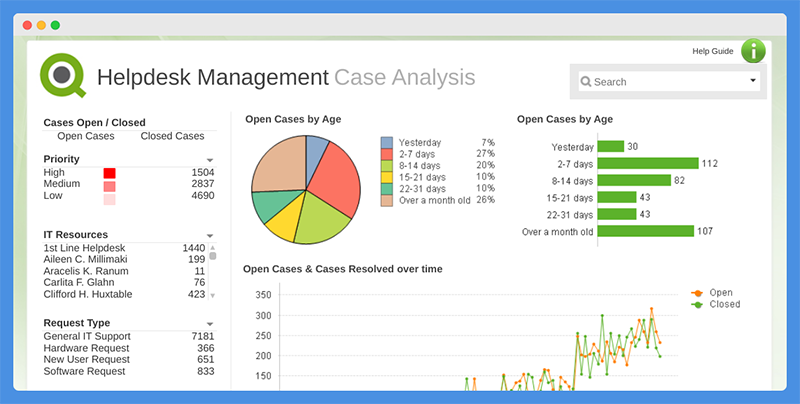Personal Career & Learning Guide for Data Analyst, Data Engineer and Data Scientist
Column manipulation is an important aspect of data analysis, and QlikView provides powerful tools for doing just that. Column manipulation refers to the process of transforming and modifying columns of data to fit specific needs and requirements. This can involve adding, removing, or rearranging columns, as well as modifying the values within columns.
QlikView makes column manipulation easy and intuitive, even for those who are new to data analysis. With its user-friendly interface and drag-and-drop functionality, users can quickly and easily make changes to their data without the need for any programming knowledge. Whether you’re working with a large or small data set, QlikView makes it simple to manipulate columns and get the results you need.
One of the most useful features of QlikView for column manipulation is its ability to add calculated columns. This allows users to perform complex calculations on their data, such as calculating the average or sum of values within a column, or determining the percentage of values that meet certain criteria. With calculated columns, users can quickly and easily gain new insights into their data, making informed decisions based on the results.
Another powerful feature of QlikView for column manipulation is its ability to split columns. This allows users to take a single column of data and split it into multiple columns, each containing specific information. For example, if you have a column that contains a full name, you can split it into two separate columns for first name and last name. This can be especially useful for organizing data and making it easier to analyze.
Column manipulation in QlikView also includes the ability to remove unwanted columns. This is useful for cleaning up data and reducing the amount of information that needs to be analyzed. With just a few clicks, users can easily remove columns that are no longer needed or that contain irrelevant information.
In addition to these basic column manipulation functions, QlikView also provides more advanced features for transforming and modifying data. This includes the ability to create pivot tables, transpose rows and columns, and perform other types of data transformations. Whether you’re working with a small or large data set, QlikView has the tools you need to get the results you’re looking for.
One of the biggest benefits of using QlikView for column manipulation is its ability to save time and effort. Instead of manually modifying data, users can let QlikView do the work for them, freeing up time that can be better spent on other tasks. This is especially important for data analysts who have large amounts of data to work with, as manual column manipulation can be time-consuming and error-prone.
Another benefit of using QlikView for column manipulation is its ability to provide accurate results. With its powerful algorithms and data analysis tools, QlikView can quickly and easily transform data, reducing the risk of errors that can occur when data is manually manipulated. This helps ensure that the insights and decisions made by data analysts are based on accurate and reliable data.
In conclusion, QlikView provides powerful and flexible tools for column manipulation, making it an essential tool for data analysts. Whether you’re working with a small or large data set, QlikView has the tools you need to get the results you’re looking for. With its ability to save time and effort, provide accurate results, and make column manipulation easy and intuitive, QlikView is a valuable tool for anyone working with data.
QlikView for Data Analyst – QlikView – Column Manipulation
 Loading...
Loading...
Latest end-to-end Learn by Coding Projects (Jupyter Notebooks) in Python and R:
All Notebooks in One Bundle: Data Science Recipes and Examples in Python & R.
End-to-End Python Machine Learning Recipes & Examples.
End-to-End R Machine Learning Recipes & Examples.
Applied Statistics with R for Beginners and Business Professionals
Data Science and Machine Learning Projects in Python: Tabular Data Analytics
Data Science and Machine Learning Projects in R: Tabular Data Analytics
Python Machine Learning & Data Science Recipes: Learn by Coding
R Machine Learning & Data Science Recipes: Learn by Coding
Comparing Different Machine Learning Algorithms in Python for Classification (FREE)
There are 2000+ End-to-End Python & R Notebooks are available to build Professional Portfolio as a Data Scientist and/or Machine Learning Specialist. All Notebooks are only $29.95. We would like to request you to have a look at the website for FREE the end-to-end notebooks, and then decide whether you would like to purchase or not.
